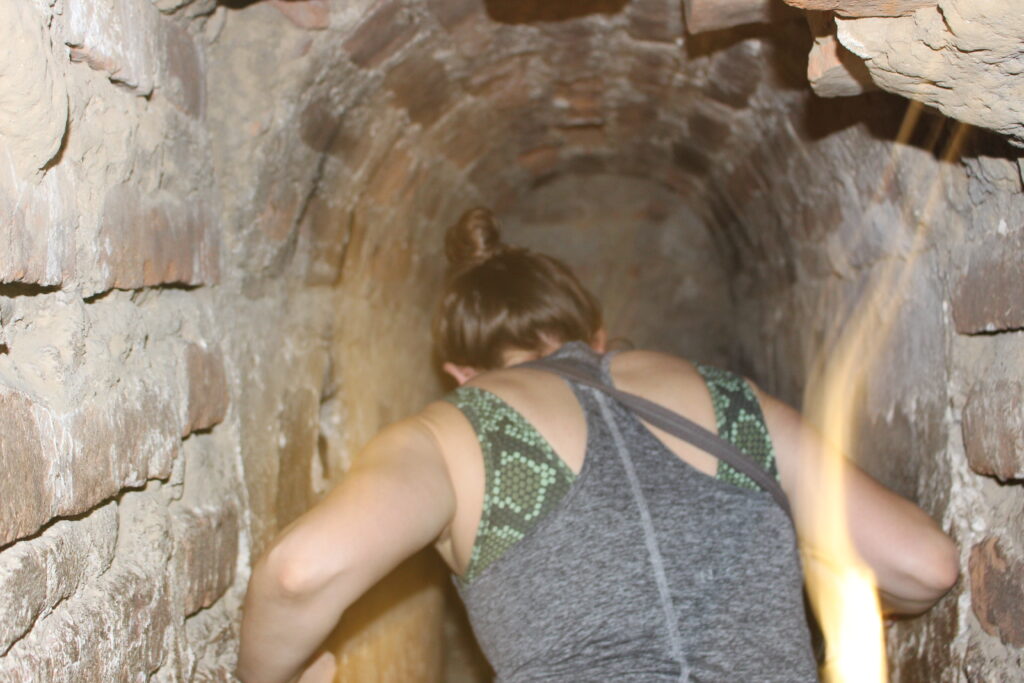
Hacienda San Jose
One of the free tours and also the 1st stop on the Peruhop trip to Cusco is to see the Secret Slave tunnels aka Hacienda San Jose.
Peruhop picked Hector and I up from our hotel in Lima at about 6:30 a.m. It was a small shuttle that had picked up 4 of us and took up to the big bus. We were the last 4 on so Hector and I didn’t get to sit beside each other but we did get to sit across from one another which was fine because it was only a short distance.
It is about a 3 hour drive to El Carmen where the Hacienda San Jose house is located. El Carmen is about 20 minutes from Chincha which is home of Afro-Peruvian Culture. Back in the 17th century rich land owners would bring slaves over from Africa to help pick cotton and cultivate sugar. The Hacienda San Jose House gives us insight into life back in colonial Peru.
The Peruhop guide gives you a guided tour and explains the rich history:


The large house was once one of the most affluent estates along the Peruvian coast. It is now a hotel but you can still see the rich history that it offers. The house has many paintings and artifacts on display from its last 300 years. However, it is what’s underneath the house that is so interesting. There are 35km of tunnels underneath San Jose. They connect to 5 other Haciendas plus the old port of Chincha.
During the 17th century slavery was legal in Peru, however the taxes on slaves were very high. To get around this, the slave owners moved the slaves from the boat, through the tunnels, and then to the haciendas very late at night, meaning the government had no registration of the slaves. Some of the slaves would end up staying in the tunnels for many months.
As the Hacienda grew and became wealthier and more well know another problem arose: it became a big target for thieves and pirates. Because of this, the tunnels were then expanded and became important escape routes. Various rooms, including the owners bedroom, were linked to the tunnels meaning a quick getaway was possible. They even linked the church! The tabernacle inside the church (used for storing bread and wine) was also where someone could access the tunnels.
When slavery was abolished in 1854 the tunnels were used as catacombs for some of the workers from the land. Some of the bones found in the tunnels were even the results of evil owners inflicting punishments on the workers.
After the guided tour ended we had time to go explore by ourselves. Hector and I walked over to the church and also another area that was once used as punishment for the slaves. We didn’t stay there long as it left you with a dispirited feeling.
This device is where the slaves would sleep as punishment.

Lunch

After the tour we hoped back on the bus where we only made one more stop, for lunch, before arriving in Paracas. I’m not sure the name of this place but on the bus the Peruhop guide tells you the 3 food options available. You don’t have to order here but it is the only place to eat (if you don’t have snacks). Hector and I both had the pork and potato sandwich and juice/coffee. It was ok. I think everyone was just happy to get some food in their stomachs! We walked around the property, before getting back on the bus, since it has horses and guinea pigs to see. It wasn’t my favourite seeing the guineapigs since I know they eat them in Peru. In England and America many people have them as pets!
The bus ride to Paracas was only about 1 hour. Both of us were running on very little sleep so we were excited to go find our hotel in Paracas with as little hassle as possible. Stay tuned for what we got up to in Paracas!
More to come!
Buffy x

























